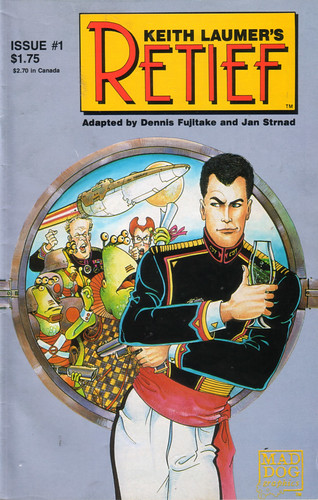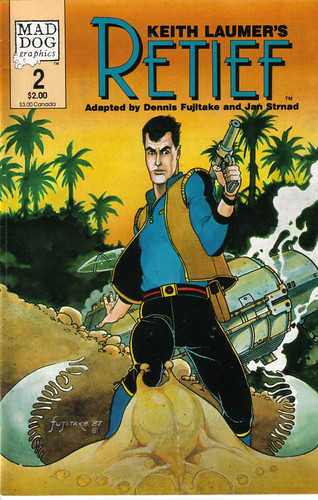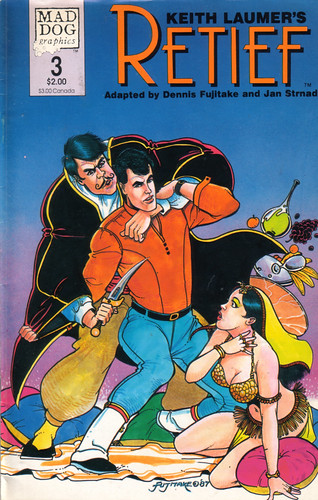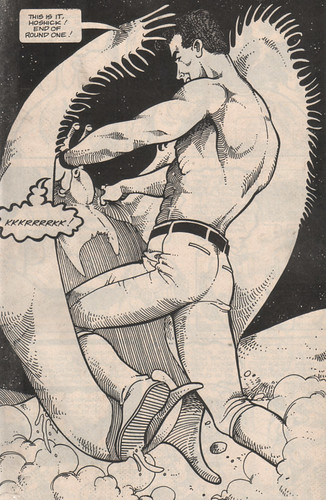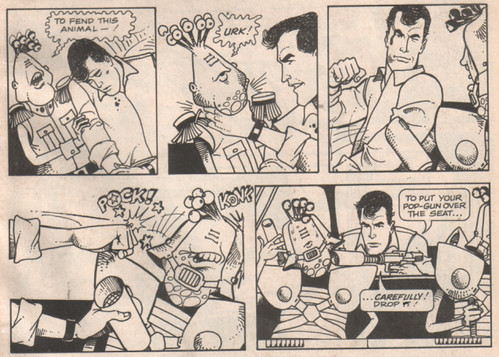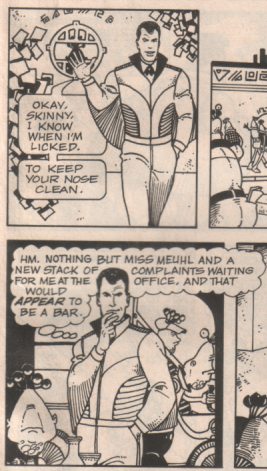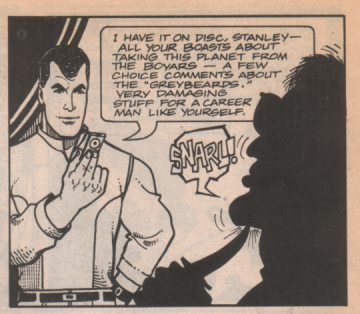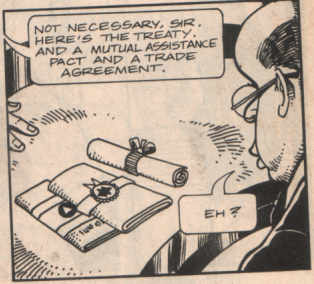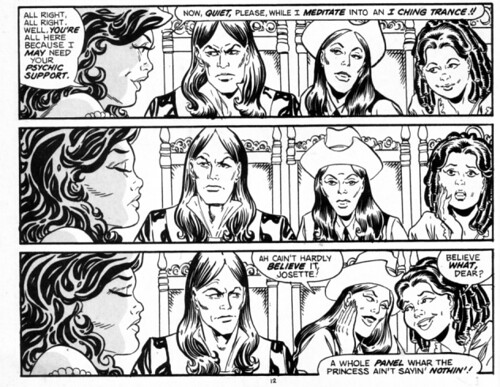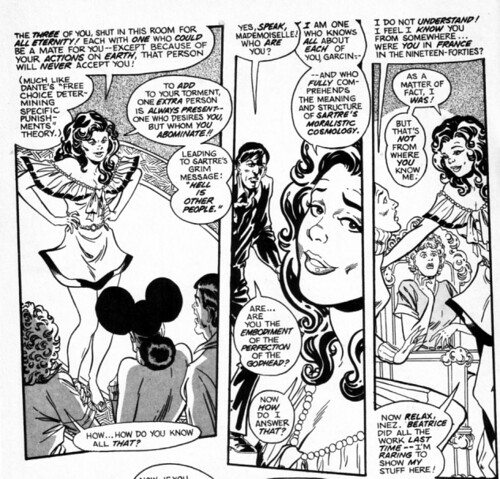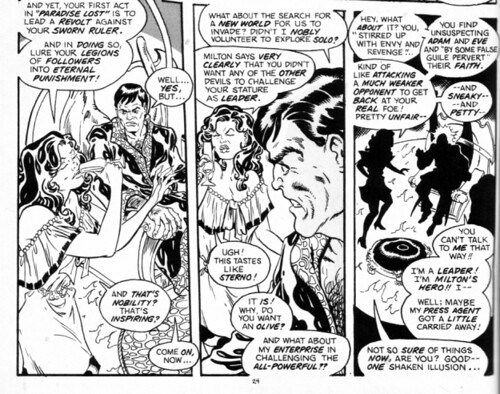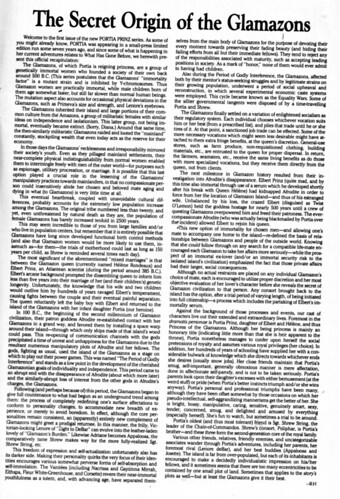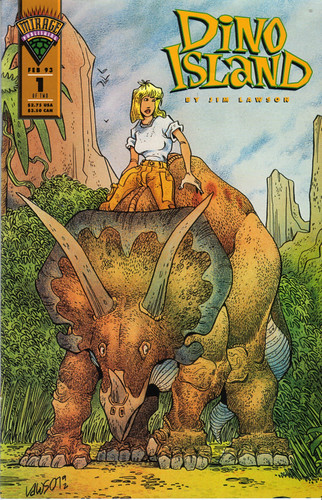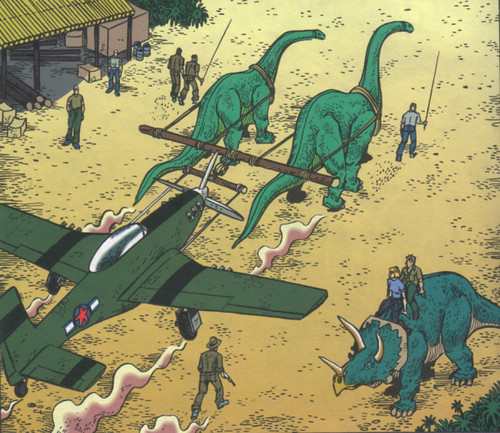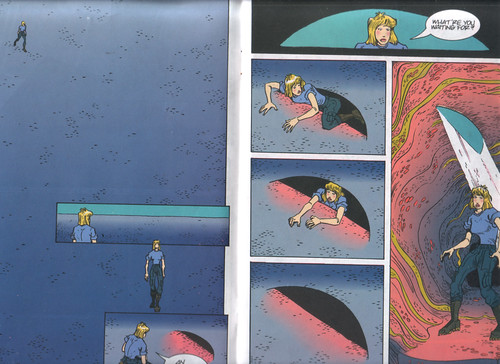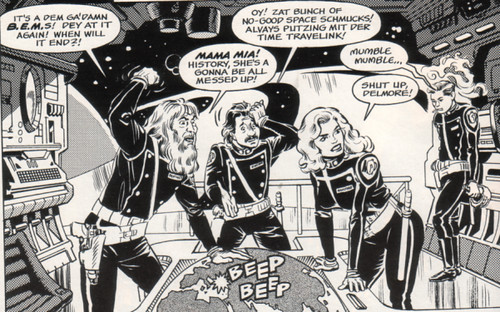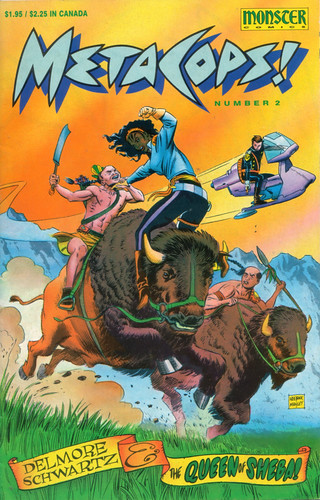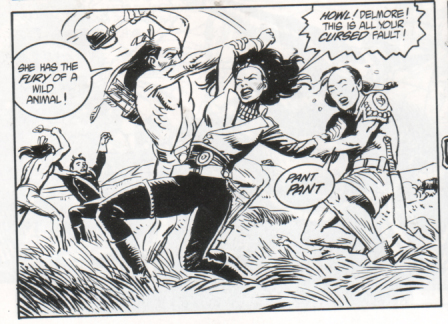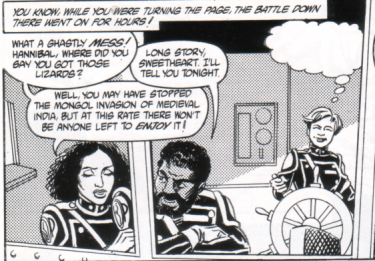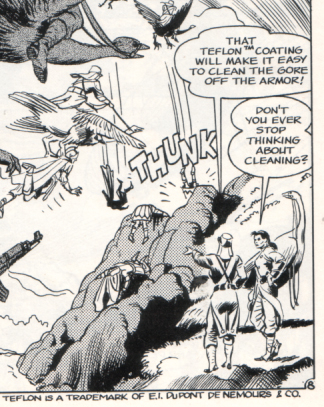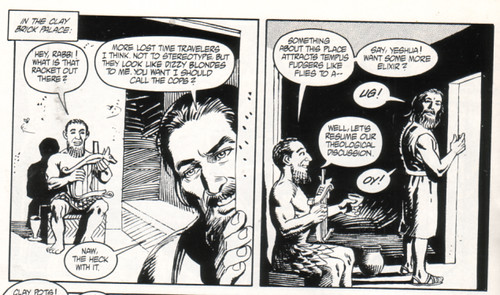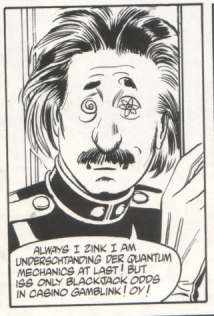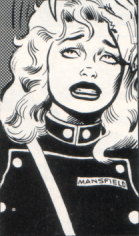 One of the old TPBs in the Last Shortbox is Zot! Book One (Eclipse Books:1990), which collects the first half of the original ten-issue color run of Zot!, Scott McCloud's whimsical-yet-thoughtful take on the Flash Gordon style of adventure story. I have always liked this series, mostly for its mischievous tone, as it apparently alternates between parody and hommage of its source material. McCloud's talent is clearly in its developmental stage here: the illustrations are as masterfully expressive as any of his art, but he doesn't seem to display the same easy command of line and form as in his later work, and the plot can be pretty pedestrian. It's well worth a read, however, and not just for its historical value.
One of the old TPBs in the Last Shortbox is Zot! Book One (Eclipse Books:1990), which collects the first half of the original ten-issue color run of Zot!, Scott McCloud's whimsical-yet-thoughtful take on the Flash Gordon style of adventure story. I have always liked this series, mostly for its mischievous tone, as it apparently alternates between parody and hommage of its source material. McCloud's talent is clearly in its developmental stage here: the illustrations are as masterfully expressive as any of his art, but he doesn't seem to display the same easy command of line and form as in his later work, and the plot can be pretty pedestrian. It's well worth a read, however, and not just for its historical value.I recently acquired another Zot! collection:

Zot!
The Complete Black and White Collection: 1987-1991
By Scott McCloud (HarperCollins: 2008)
This is a heckuva book: 576 pages of the second, black-and-white run of the title, much of which I have never seen before. It includes some commentary, some never-published art, and extras like that. I think there's some manga influence going on, in that it has been published in a sort-of digest-size (6" x 9") rather than tradition comic book/TPB size. (Am I just demonstrating my calcification when I prefer my graphic books in the "proper" size? I suppose I am.) I haven't had a chance to read all the way through yet, but I am looking forward to further exploring the early work of someone we may forget is an important comics creator as well as theorist.
The reason I mention the book now, rather than waiting to provide a full review later, is to highlight my source: Leslie, one of the librarians up at the University of Washington - Bothell / Cascadia Community College library, on the campus where I teach. This is not the first time a librarian has turned me on to a good graphic book: you may remember when Venta drew my attention to The Invention of Hugo Cabret. But this time, not only did Leslie draw my attention to the book, she gave me a copy - a signed copy she had picked up at the ALA convention. Truly, our school is blessed with the coolest librarians on the planet.
Yesterday, I took a ride up to my campus (even though I have taken the summer off) to return a library book (Fun Home, actually). As usual, I stopped in to chat with my librarian pals, and in the space of a few minutes of corridor-convo, we had discussed the movies Iron Man, The Incredible Hulk, and The Fall; Julie's cartoonist cousin, who may have found a publisher for his work; a possible conference paper to write on comics in the classroom, the lack of attendance at ALA by both DC and Marvel, and the perils of dogsitting. And I had a brand-new graphic book to add to my summer reading stack.
You can't beat that.
Follow-up department:
 Speaking of libraries, here's the review of the book Sharp Teeth by Toby Barlow from the library-based and library-themed webcomic Unshelved. (Click the pic to go to the site for a readable version.)
Speaking of libraries, here's the review of the book Sharp Teeth by Toby Barlow from the library-based and library-themed webcomic Unshelved. (Click the pic to go to the site for a readable version.)In light of a prior conversation about descriptions of this book as a "graphic novel without the pictures," I found it amusing that a review done in comics format, on a webcomics site that often reviews graphic novels, refers to the volume as "a book of poetry" and "a novel in verse," and doesn't mention graphic novels at all. I would figure that if anyone was going to see that metaphor, the guys would.







